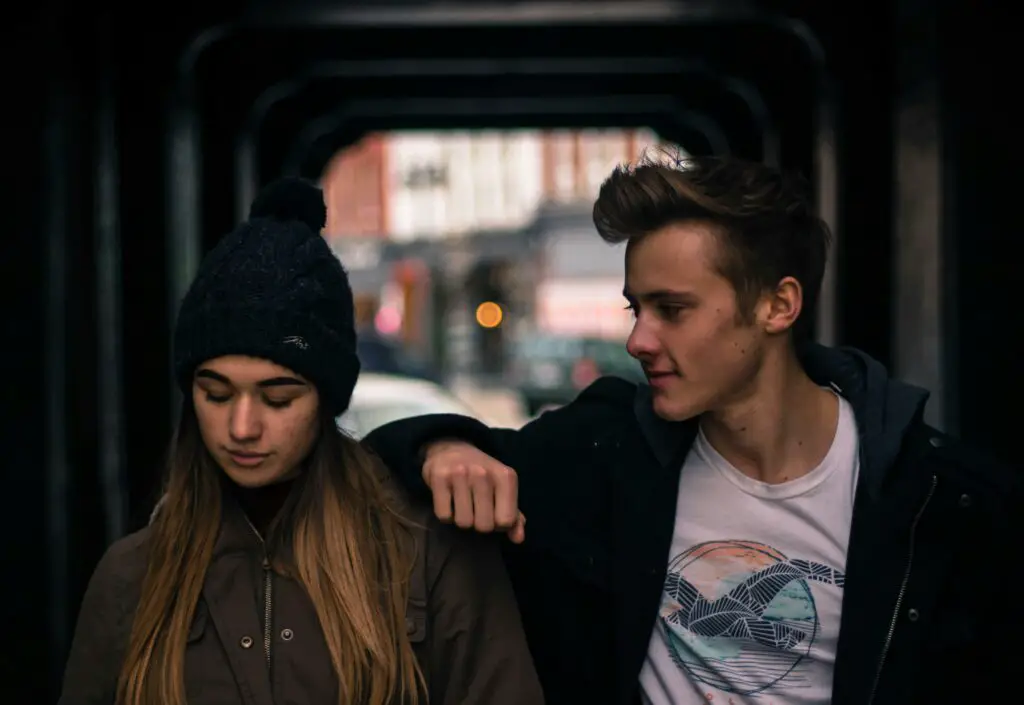In the intricate dance of human communication, gestures often speak louder than words. When words falter, our bodies become a canvas upon which emotions and thoughts are painted, and the simple act of looking down is a brushstroke that carries a myriad of meanings. It is a silent language, nuanced and rich, that transcends the barriers of spoken expression. In this exploration of the human gaze, we delve into the depths of what it means when someone looks down – an unspoken dialogue that unfolds in the subtleties of our shared existence.

What Does It Mean When Someone Looks Down?
The human gaze is a complex interplay of vulnerability, introspection, and social dynamics. When someone looks down, it is a poignant moment frozen in time, a non-verbal cue that echoes the symphony of their inner world. This act of casting one’s eyes downward can be likened to turning the pages of a book, each tilt and shift revealing a different chapter of the human experience.
A Gesture of Humility:
In the grand tapestry of human emotions, looking down can often be an expression of humility. Picture a shy smile accompanied by lowered eyes, a delicate dance of modesty. In social settings, when overwhelmed by praise or attention, a person may look down as a gesture of respect or even a quiet acknowledgment of their own vulnerability. It’s a way of saying, “I appreciate the recognition, but I am not comfortable basking in the spotlight.”
Sheltering in Vulnerability:
The eyes, often referred to as the windows to the soul, carry a vulnerability that is undeniable. When someone looks down, it can be an instinctual response to shield their emotions, a subtle act of self-preservation. It’s as if they are drawing the curtains over the windows, creating a momentary barrier between their innermost feelings and the external world. This retreat into oneself is an ancient dance that has echoed through human history, a silent plea for protection.
A Symphony of Reflection:
In the realm of introspection, the downward gaze becomes a canvas for deep thought. When grappling with complex emotions or contemplating the intricacies of life, one might find solace in looking down. It’s a physical manifestation of the internal dialogue, a momentary withdrawal from the external to delve into the recesses of the mind. The furrowed brow and lowered eyes become a tableau of contemplation, a silent conversation with the self.
Social Signals and Unease:
Conversely, looking down can also signal discomfort or unease in social situations. When faced with confrontation, embarrassment, or even deception, the eyes may seek refuge in the ground. It’s as if the act of avoiding eye contact becomes a shield, a means of deflecting the intensity of a moment. In such instances, the downward gaze can serve as an indicator of inner turmoil or a desire to disengage temporarily from the social stage.
The Dance of Connection:
On the stage of human connection, looking down is not always a solitary act. It can be a shared language, an unspoken dialogue between two individuals. Consider the shy glances exchanged between two people on the cusp of romance, a ballet of flirtation where the eyes play a pivotal role. The downward gaze becomes a shared secret, a dance step in the intricate choreography of mutual attraction.
Cultural Variations:
In the grand mosaic of global cultures, the meaning behind looking down can vary. In some societies, it may signify respect and deference, while in others, it could be perceived as a sign of submissiveness. Understanding the cultural nuances of this gesture adds layers to the already intricate tapestry of non-verbal communication, a reminder that the language of the eyes is not universal but shaped by the societal context in which it unfolds.
Navigating the Digital Realm:
In the age of digital communication, the downward gaze takes on new dimensions. The prevalence of video calls and virtual meetings has introduced a novel canvas for the language of the eyes. When someone looks down during a virtual interaction, it might signal distraction, disinterest, or perhaps the dual engagement of multitasking. The screen becomes a mirror reflecting not just our faces but the subtle choreography of our glances.
The Silent Power of Empathy:
In moments of shared grief or hardship, looking down becomes a powerful gesture of empathy. It’s an acknowledgment of shared pain, a collective lowering of the eyes to honor the weight of the moment. This communal act of looking down transcends words, offering solace and solidarity in the face of adversity. In these instances, the downward gaze becomes a bridge connecting hearts in a language that surpasses linguistic barriers.
The Unspoken Language Continues:
As we unravel the layers of meaning embedded in the act of looking down, it becomes evident that this silent language is far from monolithic. It is a kaleidoscope of emotions, a nuanced expression that speaks volumes without uttering a single word. From the tender dance of humility to the protective shield of vulnerability, the downward gaze is a chapter in the grand narrative of human connection.
In the symphony of existence, the language of the eyes remains a timeless melody. When someone looks down, they contribute a verse to this ever-evolving poem, a verse that resonates with the echoes of their innermost being. So, let us continue to decipher the unspoken language, for in its nuances, we find the threads that weave us together in the rich tapestry of the human experience.
